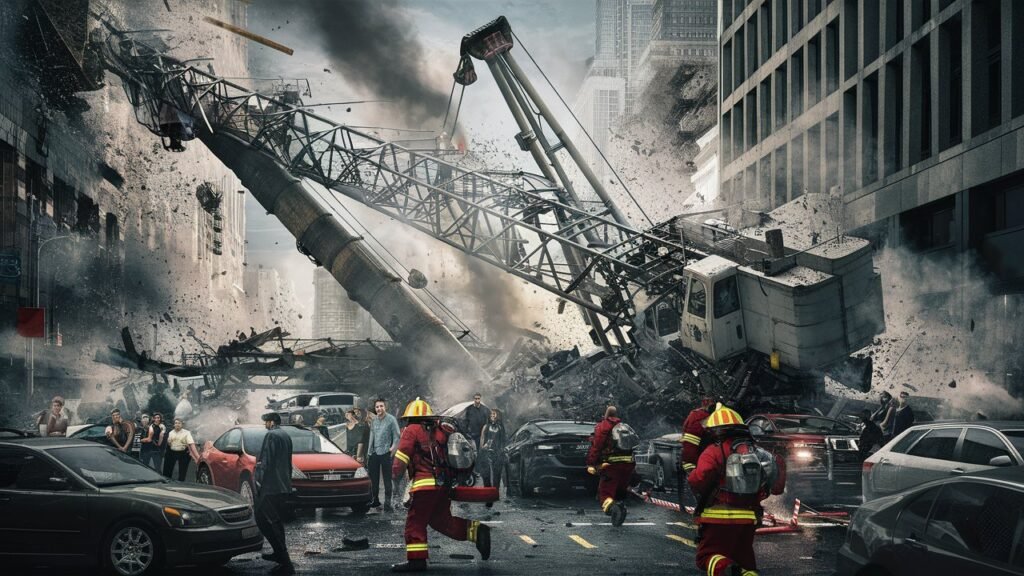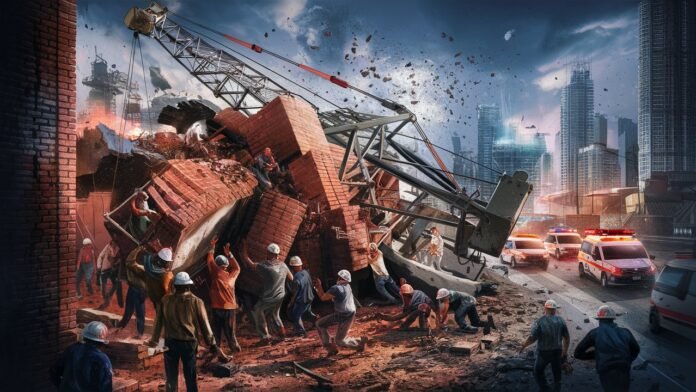Construction accidents pose significant risks to workers’ safety and well-being due to the nature of the work involved. Whether it’s a fall from height, equipment malfunction, or exposure to hazardous materials, these accidents can result in severe injuries and long-term consequences. This article aims to educate construction workers and their families about their legal rights following an accident and how to pursue compensation for injuries and damages incurred.
1. Overview of Construction Accidents
Construction accidents encompass a wide range of incidents that occur on construction sites, including injuries sustained by workers, bystanders, or visitors to the site.
Key Points:
- High-Risk Environment: Construction sites involve heavy machinery, heights, electrical hazards, and dangerous materials.
- Frequency of Accidents: Despite safety regulations, construction accidents remain prevalent due to various factors, including negligence and inadequate safety measures.
2. Common Causes of Construction Accidents
Understanding the causes of construction accidents helps in identifying liability and establishing the basis for legal claims. Common causes include:
Key Points:
- Falls from Heights: Including scaffolding, ladders, and elevated platforms.
- Struck-by Accidents: Involving falling objects, equipment, or vehicles.
- Electrical Accidents: Electrocution due to exposed wires or faulty equipment.
- Caught-in or Between Objects: Injuries from being caught in machinery or between heavy objects.
3. Types of Injuries in Construction Accidents
Construction accidents can result in a wide range of injuries, from minor cuts and bruises to severe, life-altering conditions. Common injuries include:
Key Points:
- Traumatic Brain Injuries (TBI): From falls or being struck by objects.
- Spinal Cord Injuries: Resulting in paralysis or loss of mobility.
- Fractures and Broken Bones: Due to falls or equipment accidents.
- Burns and Chemical Exposures: From fires, explosions, or hazardous materials.
4. Steps to Take After a Construction Accident
Immediate actions following a construction accident can significantly impact your ability to seek compensation and protect your legal rights.
Key Points:
- Seek Medical Attention: Obtain medical treatment promptly, even for seemingly minor injuries.
- Report the Accident: Notify your employer or site supervisor and ensure an incident report is filed.
- Document Evidence: Gather witness statements, photographs of the accident scene, and medical records.

5. Your Legal Rights
As a construction worker injured on the job, you have specific legal rights to pursue compensation for your injuries and losses incurred.
Key Points:
- Right to a Safe Workplace: Employers are obligated to provide a safe working environment and adhere to safety regulations.
- Right to Workers’ Compensation: Entitled to benefits regardless of fault, covering medical expenses and lost wages.
- Right to Legal Representation: You have the right to consult with a personal injury attorney to explore legal options.
6. Workers’ Compensation Benefits
Workers’ compensation provides essential benefits to injured workers, including medical treatment, wage replacement, and disability benefits.
Key Points:
- Coverage: Benefits cover medical expenses related to the injury and a portion of lost wages during recovery.
- No-Fault System: Workers’ compensation is a no-fault system, meaning benefits are available regardless of who caused the accident.
7. Third-Party Liability
In addition to workers’ compensation, you may have the right to pursue a third-party liability claim against parties other than your employer whose negligence contributed to the accident.
Key Points:
- Examples: Equipment manufacturers, subcontractors, or property owners may be liable for accidents caused by their negligence or unsafe conditions.
- Compensation: Third-party claims can seek additional damages not covered by workers’ compensation, such as pain and suffering or punitive damages.
8. Pursuing a Personal Injury Lawsuit
If your injuries are severe or involve significant damages not fully covered by workers’ compensation, you may consider filing a personal injury lawsuit against liable parties.
Key Points:
- Legal Thresholds: Lawsuits require proving negligence or misconduct by the defendant that directly caused your injuries.
- Damages: Lawsuits can seek compensation for economic losses, non-economic damages, and punitive damages in cases of egregious conduct.
9. Compensation for Construction Accidents
Compensation for construction accidents aims to provide financial support for medical expenses, lost income, rehabilitation costs, and pain and suffering.
Key Points:
- Economic Damages: Tangible losses such as medical bills, lost wages, and future medical expenses.
- Non-Economic Damages: Intangible losses including pain, suffering, emotional distress, and loss of enjoyment of life.
- Punitive Damages: Awarded to punish defendants for willful misconduct or gross negligence.
